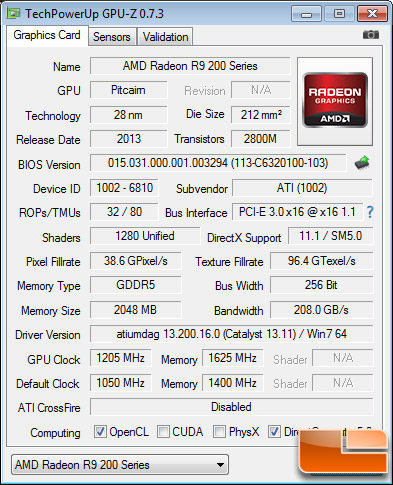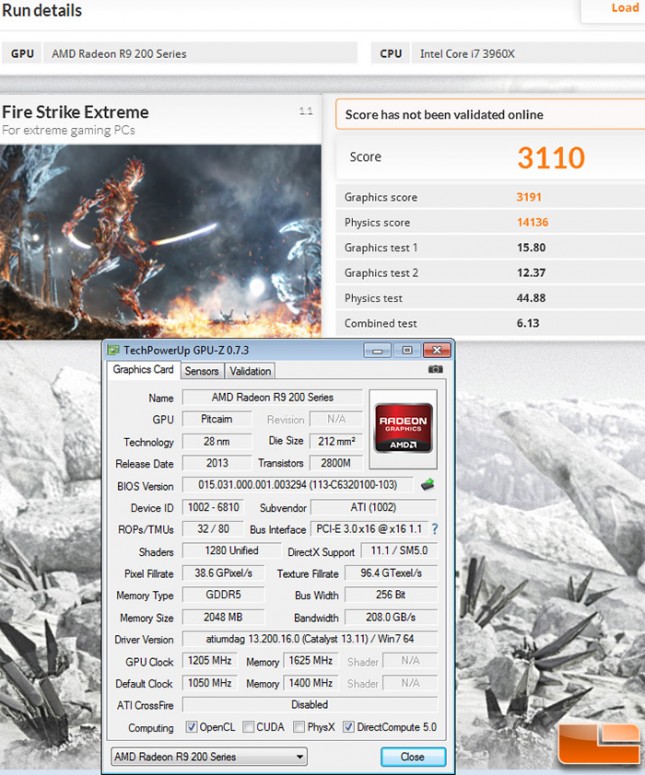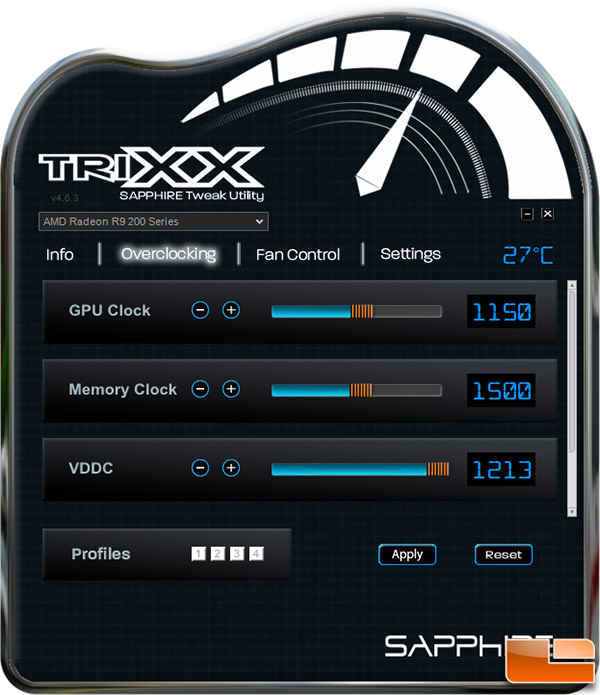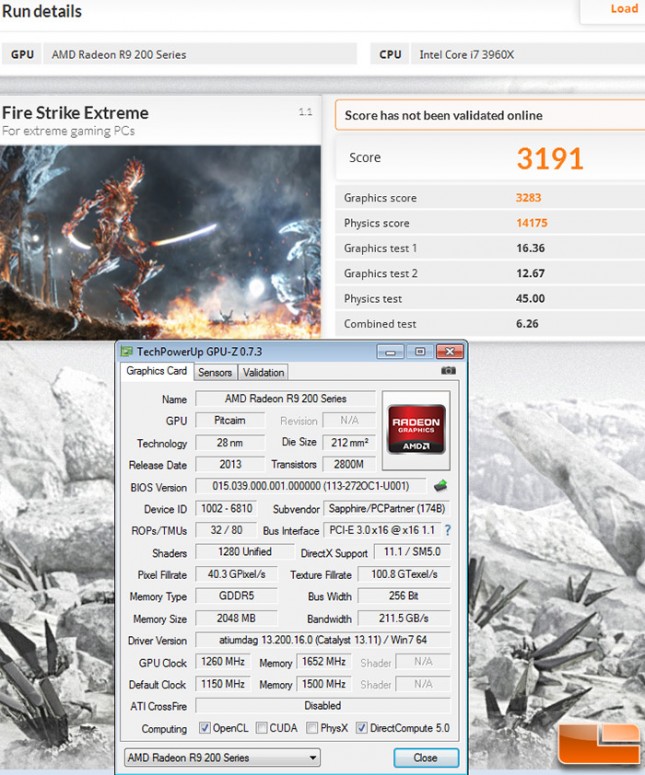AMD Radeon R9 270X & Sapphire TOXIC R9 270X Video Card Reviews
AMD Radeon R9 270X GPU Overclocking
To take a quick look at overclocking we fired up AMD Catalyst Control Center and used AMD Overdrive to overclock these two Radeon R9 270X 2GB video cards.

The AMD Radeon R9 270X 2GB comes clocked at 1050MHz on the core and 1400MHz on the memory. You can go up to 1400MHz on the core and 1625MHz on the memory in AMD OverDrive.

We were easily able to overclock the AMD Radeon R9 270X to 1205MHz on the core and 1625MHz on the memory. The limit in AMD OverDrive is 1625MHz on the memory, so we might be limited by the utility on this clock speed. Let’s take a look at some Futuremark 3DMark scores with the Fire Strike Extreme preset to see what happens with performance when the card is overclocked.

With this overclock we ran a quick run of 3DMark Fire Strike Extreme and found our score went up from 2,740 3DMarks to 3,110 3DMarks, which is an improvement of 370 3DMarks or 13.5%. This is a solid overclock, but what can the Sapphire Toxic R9 270X overclock to?

To overclock the Sapphire Toxic R9 270X video card we used Sapphire’s TRIXX overclocking utility. We were sent TRIXX v4.6.3 beta to try out and it appeared to work fine. This utility goes way beyond the clock settings found in AMD OverDrive, so it will be interesting to see how far we can push this card. We were a bit dissapointed to find that the GPU Voltage (VDDC) was already set to the max by default, so all we could adjust was the GPU and memory clock speeeds.

After playing around for a couple hours and crashing the system a dozen times with failed overclocks, we were able to get 1260MHz on the core and 1652MHz on the memory (6608MHz Effective). This is 55MHz higher on the core that we could get from the reference card. This isn’t much higher than the reference card and guess what? We’ve gotten slightly higher overclocks on AMD Radeon 7870 GHz Edition cards in the past when it comes to GPU clock speeds! Our 3Dmark Fire Strike Extreme score went from 2,994 to 3,191 with this overclock. The performance gap when overclocked is under three percent between the two cards.
